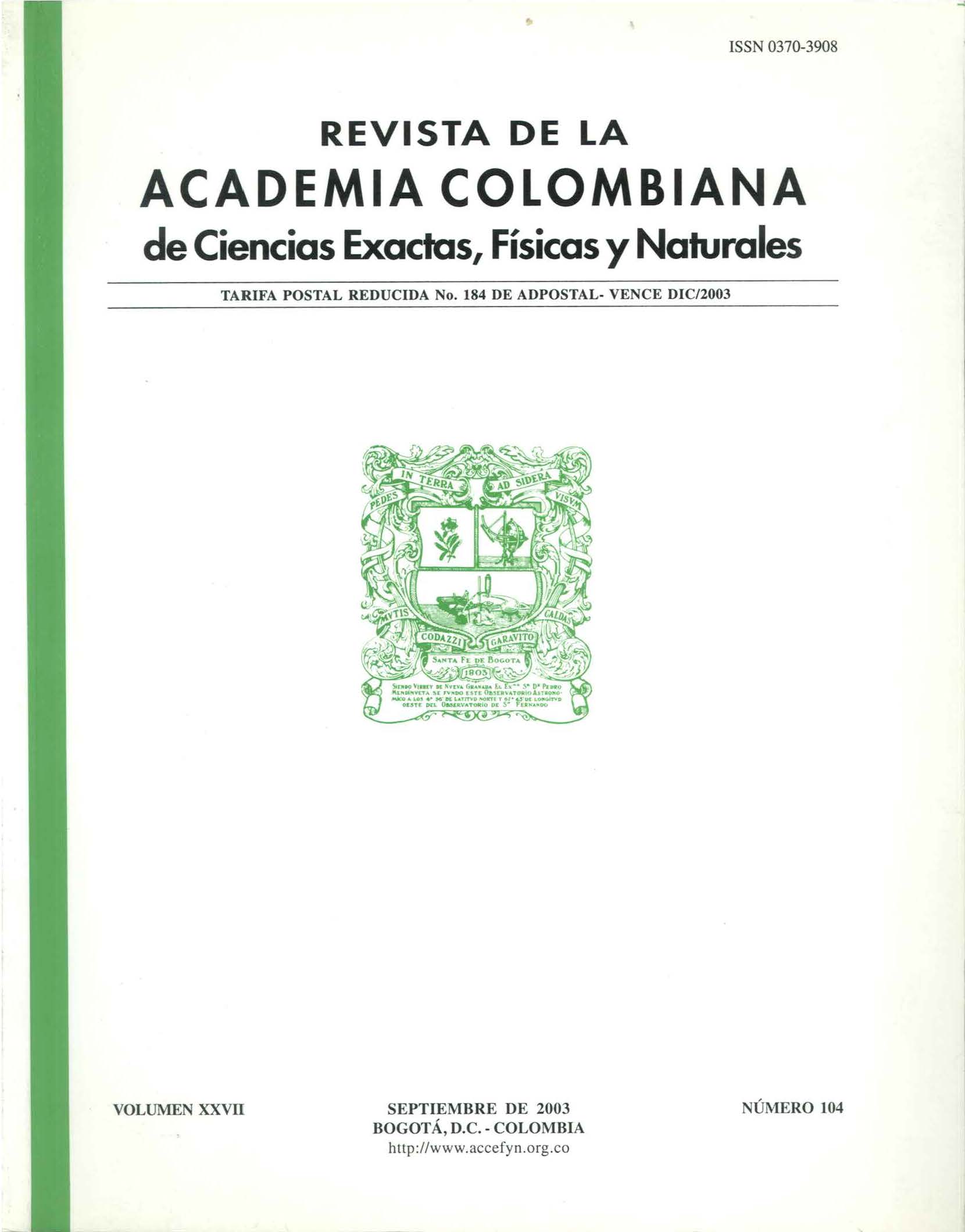Abstract
The reproductive biology of the small fire ant Wasmannia auropunctata (Roger), a polygynous neotropical species, was studied. The research focused on queen biology, particularly investigating two factors affecting fecundity: queen age and the number of queens in colonies. A significant correlation between fecundity and age was found. Egg-laying is highest in young queens and decreases as they age, with a lifespan ranging from 11 to 15 months. Observations in field and laboratory conditions revealed an inverse relationship between the number of queens and the individual queens fecundity.
References
Arcila, A.M., Ulloa-Chacón, P. & Gómez, L.A. 2002. Factors that influence individual fecundity of queens and queen production in crazy ant Wasmannia auropunctata (Hymenoptera: Formicidae). Sociobiology 39 (2): 323-334.
Brian, M. V. 1986. The distribution, sociability, and fecundity of queens in normal groups of the polygynic ant Myrmica rubra. Insectes Soc., 33: 118-131.
Brian, M. V. 1988. The behavior and fecundity of queens of different ages in synthetic groups of Myrmica rubra L. with different worker populations. Insectes Soc., 35: 153-166.
Edwards, J. P. 1987. Caste regulation in the pharaoh's ant Monomorium pharaonis: the influence of queens on the production of new sexual forms. Physiol. Entomol., 12: 31-39.
Espinal L. S. 1968. Visión ecológica del departamento del Valle del Cauca. Universidad del Valle. Cali-Colombia, 40 pp.
Fletcher, D. J. C. & Blum, M. S. 1981. Pheromonal control of dealation and oogenesis in virgin queen fire ants. Science, 212: 73-75.
Fletcher, D. J. C. 1983a. Regulation of queen number by workers in colonies of social insects. Science, 219: 312-314.
Fletcher, D. J. C. 1983b. The inhibitory pheromone of queen fire ants (Solenopsis invicta): effects of disinhibition on dealation and oviposition by virgin queens. Comp. Physiol. A., 153: 467-476.
Fletcher, D. J. C., Blum, M. S., Whitt, T. V. & Tempel, N. 1980. Monogyny and polygyny in the fire ant Solenopsis invicta Buren. Ann. Entomol. Soc. Am., 73: 658-661.
Greenberg, L., Fletcher, D. J. C. & Vinson, S. B. 1985. Differences in worker size and mound distribution in monogynous and polygynous colonies of the fire ant Solenopsis invicta Buren. J. Kansas Entomol. Soc., 58: 9-18.
Keller, L. 1988. Evolutionary implications of polygyny in the Argentine ant, Iridomyrmex humilis (Mayr) (Hymenoptera, Formicidae): an experimental study. Anim. Behav., 36: 159-165.
Keller, L. & Passera, L. 1990. Fecundity of ant queens in relation to their age and the mode of colony founding. Insectes Soc., 37: 116-130.
Keller, L., Passera, L. & Suzzoni, J. P. 1989. Queen execution in the Argentine ant Iridomyrmex humilis (Mayr). Physiol. Entomol., 14: 157-163.
Mercier, B. 1984. Role de la polygynie daos la productivité des reines de la fourmi Plagiolepis pygmaea Latr. (Hymenoptera, Formicidae). Thèse 3ème cycle, Université Paul-Sabatier, Toulouse, 130 pp.
Mercier, B., Passera, L. & Suuoni, J. P. 1985a. Etude de la polygynie chez la fourmi Plagiolepis pygmaea Latr. (Hymenoptera, Formicidae). I. La fécondité des reines en condition expérimentale monogyne. Insectes Soc., 32: 335-348.
Mercier, B. 1985b. Etude de la polygynie chez la fourmi Plagiolepis pygmaea Latr. (Hymenoptera, Formicidae). II. La fécondité des reines en condition expérimentale polygyne. Insectes Soc., 32: 349-362.
Mercier, B. 1986. La polygynie chez Plagialepis pygmaea Latr. (Hymenoptera, Formicidae): Les interactions royales et la fécondité. Actes Coll. Insectes Sociaux, 3: 173-185.
Palma-Valli, G. & Delye, G. 1981. Controle neuro-endocrine de la ponte chez les reines de Camponotus lateralis Olivier (Hymenoptére, Formicidae). Insectes Soc., 28: 167-181.
Passera, L. 1984. L'organisation sociale chez les fourmis. Ed. Univ. Paul Sabatier Toulouse, France, 360 p.
Petersen-Braun, M. 1975. Untersuchung zur sozialen Organisation de Pharaoameise Monomorium pharaonis (L.) (Hymenoptera, Formicidae). I. Der Brutzykius und seine Steuerung durch populationseigene Faktoren. Insectes Soc., 22: 269-292.
Ulloa-Chacón, P. 1990. Biologic de la reproduction chez la petite fourmi de feu Wasmannia auropunctata (Roger) (Hymenoptera, Formicidae). Thèse de doctorat, Université de Lausanne, 161 p.
Ulloa-Chacón, P. & Cherix, D. 1988. Quelques aspects de la biologie de Wasmannia auropunctata (Roger) (Hymenoptera, Formicidae). Actes Coll. Insectes Soc., 4: 177-184.
Ulloa-Chacón, P. 1989. Etude de quelques facteurs influençant la fécondité des reines de Wasmannia auropunctata (R.) (Hymenoptera, Formicidae). Actes Coll. Insectes Soc., 5: 121-129.
Ulloa-Chacón, P. & Cherix, D. 1990. The little fire ant, Wasmannia auropunctata (Roger) (Hymenoptera, Formicidae). In: Applied Myrmecology: A world perspective. Vander Meer, R.K., Jaffe, K. And Cedeño, A. (eds.). Westview press, Boulder, Colorado.
Vargo, E. L. & Fletcher, D. J. C. 1989. On the relationship between queen number and fecundity in polygynous colonies of the fire ant, Solenopsis invicta. Physiol. Entomol., 14: 223-232.
Willer, D. E. & Fletcher, D. J. C. 1986. Differences in inhibitory capability among queens of the ant Solenopsis invicta. Physiol. Entomol., 11: 475-482.
Yamauchi, K., Kinomura, K. & Miyake, S. 1982. Sociobiological studies of the polygynic ant Lasius sakagami. 2. Production of colony members. Insectes Soc., 29: 164-174.
Zar, J.H. 1984. Biostatistical Analysis. Prentice Hall, Inc., New Jersey.

This work is licensed under a Creative Commons Attribution-NonCommercial-NoDerivatives 4.0 International License.
Copyright (c) 2023 https://creativecommons.org/licenses/by-nc-nd/4.0

